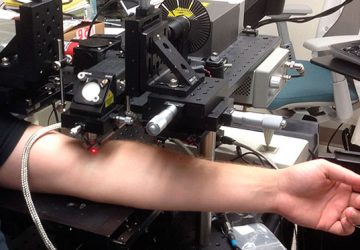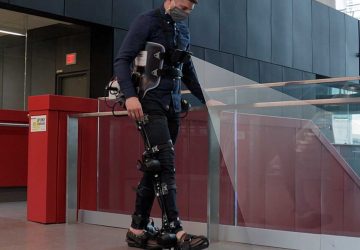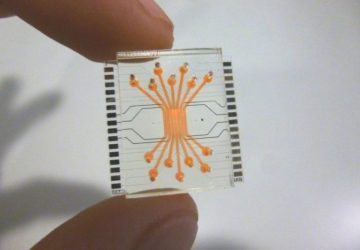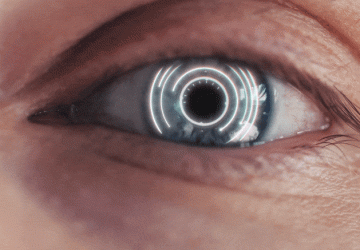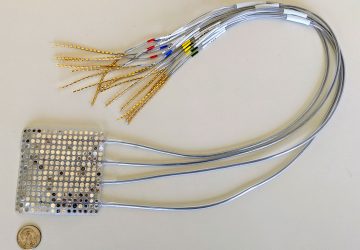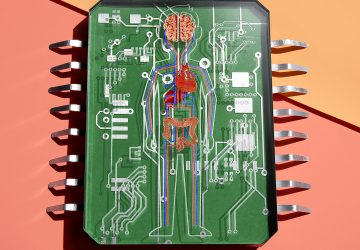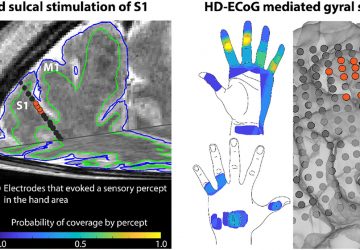
I’ll just come right out and say it: Scientists have created human-controlled rat cyborgs.
Lest you think this is some media sensationalism at work, here’s the actual title of the paper under discussion, which came out last week in Scientific Reports: “Human Mind Control of Rat Cyborg’s Continuous Locomotion with Wireless Brain-to-Brain Interface.” That pretty much says it all.
Some of this tech — such as brain-brain interfaces (BBIs) and rat cyborgs — is nothing new in science, so in a way this just a small step in an already existing race. But, put another way: people are controlling rat cyborgs with their freaking brains now. Wirelessly.
The Main Brain
Here’s the deal.
BBIs are themselves based on stringing together BMIs, or brain-machine interfaces. These already exist, and present a cool way for people to control prosthetics or other devices. Apparently they can also function the other way around — instead of a brain controlling a device, a machine can alter brain patterns or “import tactile information back to the brain,” as the study’s authors put it. So BMIs allow for mechanically “controlling” others’ brains.
In effect, it works like this: A human has movement-related thoughts, which an EEG picks up and transfers to a computer. The computer translates that signal into “control instructions,” which get wirelessly beamed into the stimulator on the back of the rat andthen into its brain via electrodes (which is, by the way, now a rat cyborg because of its cybernetic parts). The rat then responds to the instructions by actually doing them. All this tech exists, but for some reason “very few previous studies have explored BBIs across different brains,” the authors write — so they fixed that with a very real, actual experiment that involved humans wirelessly controlling rat cyborgs through mazes.
I can’t stress enough how real this is, or how often the authors used the phrase “rat cyborg” in their peer-reviewed scientific paper.
Testing Rat Cyborgs
The researchers, all from Zhejiang University in China, explain that they wanted a system that worked nearly instantaneously and with high accuracy, due to a living creatures’ “agility and self-consciousness.” And, apparently, that’s what they got.
“With this interface, our manipulators were able to mind control a rat cyborg to smoothly complete maze navigation tasks,” the authors write, almost gloating.
The human controller was non-invasively hooked into the BBI, where thinking about moving their left or right arms would command the rat to turn in those directions, and blinking corresponded to forward. The study used six rat cyborgs, well-trained and previously prepared for such control. The final part of the system involved a camera showing the rat’s real-time reactions, allowing the human controller to get instant visual feedback.
At first the maze was simple, a multi-armed set of tubes that met in the middle, like the spokes of a wheel. The idea was to use it to practice commanding the rat through turns. Then the mazes got more complex, with tight turns, multiple levels and a specific prescribed path. The rat cyborgs handled well, overall, with improved control over time; two of the rats apparently performed flawlessly.
(For their parts, the human controllers were subject to fatigue and easily distracted, but over time they improved, too, cultivating what the writers call “a tacit understanding between the human and the rat cyborg.”)
Nothing To Worry About…
I know what you’re thinking (a chilling phrase in light of the subject matter): Is this for real?
“The Zhang paper IS for real, and I don’t see anything unplausible about it,” says University of Washington brain researcher Andrea Stocco, who wasn’t involved with the work. “The results … are impressive but believable.”
As for next steps, the study’s authors discuss ways to improve the technology, but notably don’t suggest any particular applications, perhaps leaving those as an exercise to the reader. They do call the whole idea of BBI transmitting information between two entities “intriguingly possible,” and add, “furthermore, information flow will be made bidirectional and communicative between two human individuals.”
Stocco suggests the tech could be involved in improved augmented reality systems, remote control of an animal through tight spaces — or even an expert surgeon remotely controlling a doctor’s hands in a delicate operation. Ultimately, he says, “the holy grail of BBI would be sharing rich content that cannot be better expressed in words, such as emotions and feelings. We are still so far from that, but, of course, that would be the dream.”
For his part, Harvard lab director Seung-Schik Yoo (also unaffiliated with the paper) imagines such technology could benefit people even more directly. “I personally want to use brain stimulation [for its] neurotherapeutic applications,” he says. “I am one of the believers who think that brain stimulators will be part of our daily lives as ‘neuroprostheses’ some day.
“Of course, we have to fear the misuse of the technology and prevent it from happening,” he adds. “Many new technologies are a double-edged sword.”
But Stocco isn’t too worried. “We are very, very far from any application of these technologies on humans against their will,” he says. And anyway, it’s not like we need BBI to manipulate people even now. “Scandals like Cambridge Analytica remind us that social media feeds and advertisement campaigns are just the good old-fashioned way to achieve the same goals (making other people do something they wouldn’t do otherwise).” So really, this research is just bringing up some of the same old ethical dilemmas we should already be used to dealing with.
Only, you know, featuring rat cyborgs.
source : www.blogs.discovermagazine.com





